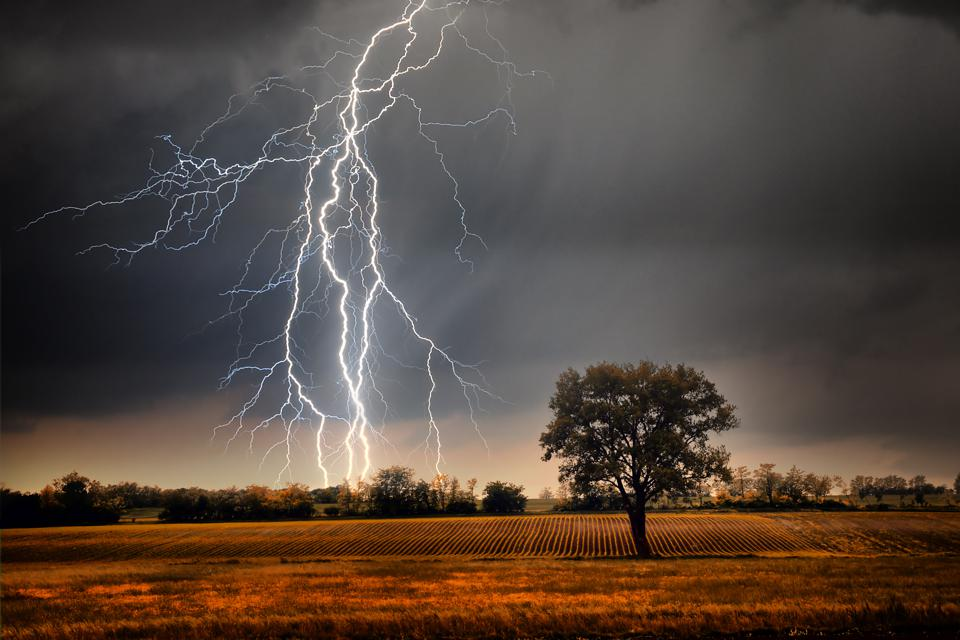New Age of Weather Data on the Blockchain

dClimate Contributor Piece By Bennett Thompson
Weather on the blockchain: sounds crazy, right? Well, maybe not. Although you may only use the weather app to decide how to dress in the morning, there are much larger implications of what is happening with the weather. Up to 70% of businesses are financially exposed to weather risks. By adopting a decentralized approach using blockchain technology, climate data publishers and collectors will be incentivized to provide highly accurate climate information at a level not previously available.
How does weather collection work?
Weather data is collected in various ways all across the world, but the most popular data collection methods are satellites and hyperlocal sensors. Satellites collect data about weather, climate, temperature, environmental monitoring, and much more. While Satellites cover a wide range of geography, they compromise accuracy in specific areas that hyperlocal data can mediate. Hyperlocal data refers to a more niche version of local data, for example, your weather app provides granular levels of weather in your zip code.
Everything collects data now: street cameras, Bluetooth-connected cars, cell phone towers, planes, just to name a few. Hyperlocal data collection is the most efficient form of data collection. All of these devices connected to the internet share data. But the data is stored sporadically across the internet deep in data files with random names and variables. For example, If you happen to look for data in a specific area then you will find the data company with the biggest marketing budget, not necessarily the most accurate data forecasts. Furthermore, the data is presented in incomprehensible formats separated by commas and displayed in long documentations. This can be even more challenging for non-experts to interpret raw weather and climate data to assess current and future conditions.
Though imperfect when it comes to distribution, hyperlocal data plays an essential role in helping farmers decide when to plant, water, and harvest their crops. Data sources for agriculture include sensors for temperature, water, soil, crop production, etc. Hyperlocal data collection is transforming the decision-making of farmers. Data-driven agriculture can help farmers become more efficient and profitable.
70% of businesses are estimated to be impacted by weather globally. Some of the sectors and industries that are most directly impacted by the elements are tourism, construction, transportation, and event planning (to name a few). When hyperlocal weather data is either inaccurate, misrepresented, or not available altogether, it makes it difficult for businesses to properly leverage this information when planning for the future.
Blockchain Solutions
The solution to inaccurate weather data: blockchain. Blockchain can be used to transparently track a vast amount of data such as the carbon footprint of every country, the greenhouse gas or waste emissions of a factory, or a company’s overall history of compliance with environmental standards. Over 700 companies including Facebook, Tesla, and Amazon have failed to disclose their environmental impact. The unaccounted reports affect over 20% of the world’s emissions. Moreover, extreme weather events becoming more frequent and intense in 2020 the ten worst events cost the world over $140 billion. The need for accurate and secure climate data will only grow. By sharing climate data, scientists and data analysts will be able to plot more accurate predictions and the overall effects of climate change like rising temperatures.
One new blockchain application, dClimate, increases transparency and access to standardized datasets, forecasts, and models through a decentralized marketplace. Data is immutable and forecasts are provided with a skill score after being compared to satellite, hyperlocal, and other data sources and models. Through dClimate’s marketplace, data publishers and collectors can monetize and distribute their collected data. The marketplace will serve as a key infrastructure going forward in tracking and studying climate change, natural disasters, rainfall, and much more. The platform will create a community of climate data that lowers barriers to entry, lowers costs, and provides vast data coverage to benefit all participants.
In addition to helping farmers and businesses make better decisions, another advantage of more accurate weather data is the ability to provide standardized measurements of the effectiveness of climate change initiatives and policies.
As we continue to collect and store climate datasets, forecasts, and models it will open up a more transparent storage system that will analyze whether the changes the governments are applying around the world regarding emissions, energy consumption, and deforestation are actually making a difference and where the weaknesses lay. Countries and businesses will be held accountable for bending or breaking the rules.
Weather data provides critical information about our planet and its complex ecosystems. Climate information helps businesses, organizations, and individuals plan and build resilience for the future. Blockchain technology is critical to creating transparency of reporting, using immutable datasets to hold countries accountable, and allowing businesses to access vast amounts of data to make better informed real-time decisions.
About the Author: Bennett Thompson is a dClimate community manager. He is currently a student at Northeastern University studying Computer Science and Business Administration with a FinTech concentration. He is president of Northeastern’s Blockchain Organization.
Contributor articles reposted by dClimate reflect the views of the author and not the views of the dClimate team. If you are interested in having an original article or thought leadership blog republished by the dClimate team, please send a draft to community@dclimate.net for consideration.

